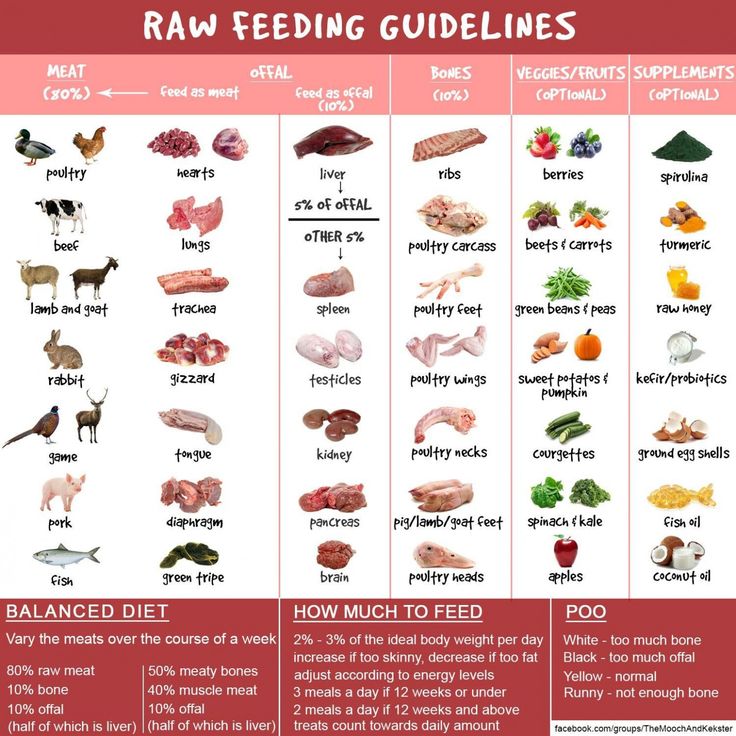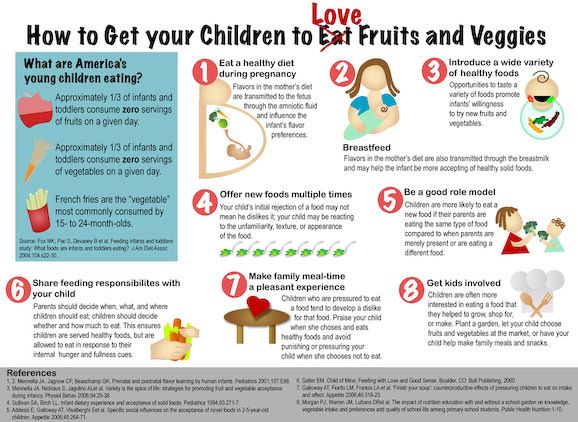Feeding baby ringnecks
Hand Raised Indian Ringneck Information
Hand raised indian ringnecks are only available at one period a year as they only breed once a year. If you are after a hand raised pet and want to lock one of our babies in for your self next season call us the shop on 02 96672555
The fact is, that these birds make wonderful pets with training. Many people are turned off by young Indian Ringnecks as they often become a bit nippy after being weaned, this is due to hormones running through there body. With patience, the right training and care, your bird will soon overcome this stage and become a fantastic Hand Raised bird. So never give up on your bird it is the worst thing you can do. Ringnecks that are handled regularly become a very sweet bird with a pleasant nature. These birds are very inteligent and toys are very impotant. With the right training these birds can also talk.
Distribution
These birds natural habitat semi desert, open shrub and bushland and ever green forest in India and Asia. They also inhabit gardens orchards towns and cities where they rely on rich fruit bearing vegetation and locals who feed them. The Indian Ringneck have become introduced pests in some countries and has the potential to become another introduced pest in australia. With the right precautions and care we can greatly reduce this possibility.
Description and Sexing Indian Ringneck Parrot’s
The indian ringneck in its natural form is a medium to small sized parrot with a red hooked beak and a long tail. They are 37 cm to 43 cm long including the tail and green in colour. A mature male will develop a black and pink ring around its neck around two years of age, where females will never develop a ring, like a juvinile. In captivity there are many variations in colour. Colours range from bright yellow, blue, albino to violet and mixed variations.
Baby indian ringneck parrot’sCare and feeding indian ringneck parrot’s
feeding your ringneck does not need to be complicated as they are good eaters. These birds will always eat there favourite food usually the least healthy food first. This is not as issue leave the food there and they will eat the rest. Your bird having a varied diet will increase the health of your birds so if they still have pellets and seed left then there is no need to throw it out. This does not include birds under 4 months old as they should be fed an all you can eat buffet.
These birds will always eat there favourite food usually the least healthy food first. This is not as issue leave the food there and they will eat the rest. Your bird having a varied diet will increase the health of your birds so if they still have pellets and seed left then there is no need to throw it out. This does not include birds under 4 months old as they should be fed an all you can eat buffet.
Diet for Indian Ringneck’s
Seed-Feed your Ringneck’s a good quality small parrot seed, this seed is advisable as it does not contain as much sunflower as the normal Parrot mix. Be wary of some supermarket mixes as the quality may be low grade, if you are unsure of the seed you are using ask your local bird expert.
Sprouted seed– use a cockatoo seed mix to make your sprouted seed mix and be sure to clean your sprouted seed with aviclens before feeding to your birds to remove any bacteria.
Pellets– Feed in a separate dish not with the seed if you want to get the best value and less waste. Many people find their bird will prefer to eat seed which is normal, do not feed your bird more seed until both the pellets and seed dishes are empty. Suitable mixes for indian ringnecks are kaytee pellets, tropmix, vetafarm nutriblend pellets, vetafarm paradise pellets. I have trialed all of these pellets and they have all shown great results in bringing out the best in your feathered friends keeping them in optimum health.
Many people find their bird will prefer to eat seed which is normal, do not feed your bird more seed until both the pellets and seed dishes are empty. Suitable mixes for indian ringnecks are kaytee pellets, tropmix, vetafarm nutriblend pellets, vetafarm paradise pellets. I have trialed all of these pellets and they have all shown great results in bringing out the best in your feathered friends keeping them in optimum health.
Fruit– apples, guava, mango, pear, stone fruit, rockmelon, orange, grapes in moderation
Greens and Vegetables– corn, pumpkin, sweet potato, spinach, silver beet, seeding grasses, green grass, chickweed, green beans, cucumber, broccoli, squash, bok choy
Vitamin Supplement– added via the water supply, this is not necessary if you feed your bird any of the pellets mentioned above.
Calcium– Calcium perches or calcium bells are recommended for these birds I don’t recommend cuttlebone for Asiatic parrots.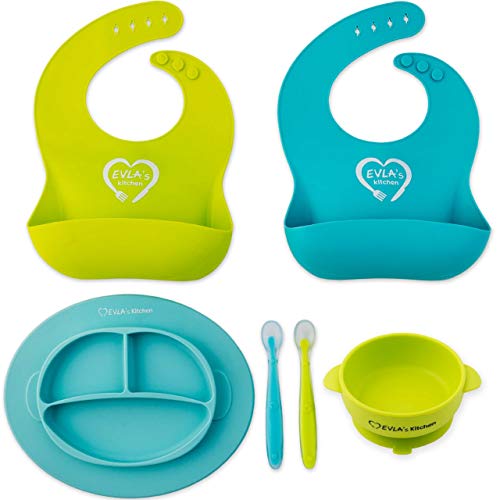
Vitamin D supplement– Essential for Indian Ringnecks that are inside and do not receive direct unfiltered sunlight. Sun through a window is filtered so will not allow your bird to absorb vitamin D. Birds and humans as well are unable to absorb calcium without vitamin D supplement.
Fresh water–
Do not feed Indian Ringnecks avocado, onion or cocoa.
Diet for a baby indian ringneck
Young birds should be provided with an all you can eat buffet of fruit, veg, nuts, pellets and seed. Unlike older birds where you would leave the food until they have dated it all younger birds can be picky and need more encouragement to feed. Baby birds having too much fatty food isnt as much of an issue as it is for a mature bird.
Housing for tame ringnecks
When looking for a cage to house your Indian Ringneck, you want to look for a cage that is large enough for your bird to stretch its wings and have a flap without hitting any toys and food bowls of the side of the cage.
 Your cage must have room for atleast 3 to 4 toys and 3 food bowls. Keeping all this in mind when buying a cage and get the largest cage you can afford to make sure your bird remains happy, healthy and tame, staff at birdsville can help you with this selection. Indian ringnecks with the wrong environment or allowed to get bored, in time will develope behaviour problems such excessive chirping or feather plucking and self mutilation. It is much easier to prevent these problems than to solve them. Select toys that they can chew on, climb on with different textures like leather and wood, toys that encourage natural foraging behaviour or a puzzle they have to solve to get a treat as well as swings, bells and ladders. Rotating toys are a good idea so your bird does not get bored with their toys. Natural tree branches with leaves also provide a good distraction for your bird but remember to clean branches under running water befor giving to your bird. If your bird is outside it is imperative that your bird has sufficient protection from the elements.
Your cage must have room for atleast 3 to 4 toys and 3 food bowls. Keeping all this in mind when buying a cage and get the largest cage you can afford to make sure your bird remains happy, healthy and tame, staff at birdsville can help you with this selection. Indian ringnecks with the wrong environment or allowed to get bored, in time will develope behaviour problems such excessive chirping or feather plucking and self mutilation. It is much easier to prevent these problems than to solve them. Select toys that they can chew on, climb on with different textures like leather and wood, toys that encourage natural foraging behaviour or a puzzle they have to solve to get a treat as well as swings, bells and ladders. Rotating toys are a good idea so your bird does not get bored with their toys. Natural tree branches with leaves also provide a good distraction for your bird but remember to clean branches under running water befor giving to your bird. If your bird is outside it is imperative that your bird has sufficient protection from the elements. Direct sun can cook and kill a bird and shelter from the rain is imperative.
Direct sun can cook and kill a bird and shelter from the rain is imperative.Introducing your new bird to existing birds and mixing birds
If you alread have an Indian Rinkneck at home and your get a second one, it is important once you take your new bird home you should keep it in a separate cage and allow the bird to adjust to the environment. Place the two cage side by side to allow the two birds to get to know each other. Always allow at least 2 weeks before introducing the new bird to an existing bird outside the cages or in the same cage. Use this time to get to know your new ringneck and start training.
Worming
Your new ringneck will need to be wormed in a few weeks to two month after being taken home (check with the staff from Birdsville, when purchasing). Young birds that have been recently weaned have a delicate bacteria’s developing in there gut, worming at this stage could harm the bacteria’s development and your new bird. Worming will need to be done
Worming will need to be done
every 6 month. Worming your bird is essential for the health of your indian Ringneck.
Lice & Mites
The two most common parasites that you may encounter when owning an Indian Ringneck is lice and mites, but they are easily controlled with a spray, which is available at Birdsville.
Training
Training your ringneck is an important factor of having a well behaved hand raised bird. You need to handle your bird in a quiet, relaxed situation. Spending time with your bird while watching TV or reading is perfect, but don’t over stress your bird in the first few weeks of taking it home babies need rest. The more time you spend with your ringneck, the better it will become. Indian Ringnecks can be tame when you purchase them and turn wild after a few days, this is quite normal with young birds as the hormones levels are very high at this age which is probably a survival tactic in the wild. If this happens it is essential that you handle the bird as much as possible. The worst thing you can do is not handle the bird because you are scared of being bitten, your bird will turn wild if it is not handled. If you are scared of the bird place some gloves on and handle the bird for lengthy periods of time while you are reading or watching tv and it will not take long before your bird settles down and loves your company. Remember your bird will not get a chance to bond with you if your not handling the bird.
If this happens it is essential that you handle the bird as much as possible. The worst thing you can do is not handle the bird because you are scared of being bitten, your bird will turn wild if it is not handled. If you are scared of the bird place some gloves on and handle the bird for lengthy periods of time while you are reading or watching tv and it will not take long before your bird settles down and loves your company. Remember your bird will not get a chance to bond with you if your not handling the bird.
Enrichment
Toys are used as a form of environmental enrichment but enrichment shouldnt stop there. As an ex zoo keeper it was a major concern that all animals must have a variety environmental enrichments to keep the critters entertained. This is in no way different for anyone who has a tame parrot at home. Enrichment is important because parrots simply can not thrive with only perches, food and water. The fact is birds provided with enrichment are unlikely to develope psychological problems such as self mutilation, feather plucking and excessive squarking.![]() Enrichment WILL in fact effect your bird in a positive way with its mental and physical development when training your bird you will actually end up with a better, less fearful, friendlier and relaxed bird which will be more easily trained. Enrichment for your Indian Ringneck can be chew toys, play toys, leather toys, acrylic plastic toys, wooden toys, shredding toys, ropes, swings, ladders, bells, balls, birdie balls, plain card board, small boxes, wicker baskets, tray of wheat grass, plants, bird baths, different foods, food kabobs and nuts, Just to name a few (all available at birdsville). You may also find in your local area pine cones, hide food inside pine cones, twigs, bendy branches, flowers and branches- safe flowers are bottle brush, grevellia, eucalypt melaleuca flowers, hubiscus, marygolds, dandy lions leaves and all, roses, violets to name a few.
Enrichment WILL in fact effect your bird in a positive way with its mental and physical development when training your bird you will actually end up with a better, less fearful, friendlier and relaxed bird which will be more easily trained. Enrichment for your Indian Ringneck can be chew toys, play toys, leather toys, acrylic plastic toys, wooden toys, shredding toys, ropes, swings, ladders, bells, balls, birdie balls, plain card board, small boxes, wicker baskets, tray of wheat grass, plants, bird baths, different foods, food kabobs and nuts, Just to name a few (all available at birdsville). You may also find in your local area pine cones, hide food inside pine cones, twigs, bendy branches, flowers and branches- safe flowers are bottle brush, grevellia, eucalypt melaleuca flowers, hubiscus, marygolds, dandy lions leaves and all, roses, violets to name a few.
Note anything found outside should be disinfected and non poisonouse. Toys must be non toxic.
Enrichment tip- the trick to keeping them entertained is regularly rotating toys as they will become bored with the same toy in there cage day after day.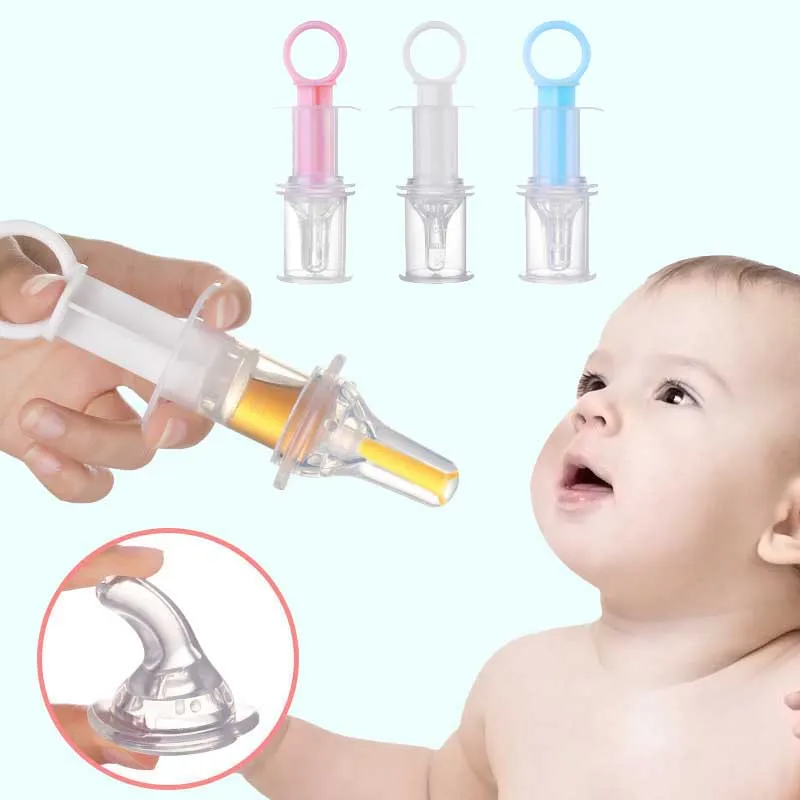 Changing them regularly will create interest for your Ringneck as if they are receiving a whole new toy to play with.
Changing them regularly will create interest for your Ringneck as if they are receiving a whole new toy to play with.
How To Hand Feed Indian Ringnecks (Step-by-Step)
Parakeets / April 28, 2021 April 22, 2022
Hand feeding Indian ring-necked parakeets comes with many benefits, but you need to do it carefully to avoid malnutrition or other severe health conditions.
You’ll want to make sure your birds are comfortable with you and open to the experience.
So, how do you hand feed Indian ringnecks?
To hand feed Indian ringnecks, wash your hands and prepare a vet-approved, species-specific formula according to the directions for your bird’s size and age. Then, warm the food to about 100℉ and gently offer it to the bird. Put the bird on a gripped towel and slip a syringe through the beak.
Table of Contents
How To Hand Feed Baby Indian Ringnecks
If possible, it’s best to get hands-on training from a breeder or other avian professional before attempting to raise or feed baby birds, including ringnecks.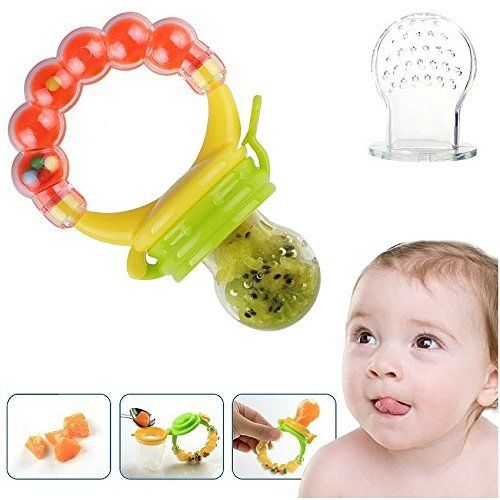
Make sure you’ve become comfortable with the process before you try feeding on your own.
Understand the Ringneck temperament before attempting to raise or feed them. It also helps to learn the difference between feeding baby birds and adults.
What Kind of Temperament Do Indian Ringnecks Have?
Indian ring-necked parakeets, also known as Rose-ringed parakeets or parrots, are known to be temperamental but are tame when provided adequate attention.
They’re energetic and playful birds and develop the ability to talk well as they age.
To avoid developing a neurotic Ringneck, make sure you give your featured friend enough attention and enough free time outside the cage, especially at a young age.
You also want to avoid roughly handling these sensitive birds.
Due to their large tails and personalities, it’s important to provide a large cage and plenty of toys.
They may even destroy toys while playing, so be sure you’re checking the toys for things like exposed wires and replacing them as necessary.
With proper care and attention, Indian ringnecks can be loyal and caring companion pets.
You’ll just need to make sure they aren’t exposed to stressors regularly if you want to avoid biting behaviors. That means eliminating startling noises or sudden changes in the environment.
Special Considerations When Feeding Baby Birds
Baby birds require more liquid in their diet the younger they are, so make sure you’re mixing the formula appropriately for their size. Don’t forget to adjust the quantity and quality of the food as the birds grow.
Smaller birds like the Indian Ringneck Parakeet will require more frequent, smaller feedings. Accommodate their rapid growth phase, which happens for the second and third weeks of life.
But don’t overfeed your birds. Your bird should relieve itself within about four hours of feeding if you’re feeding it the right amount.
If your bird isn’t eating correctly, consult a veterinarian who can diagnose the problem and offer the next steps for you in the feeding process.
You should also weigh your bird before and after each feeding. Expect some weight loss throughout the weaning process, but not too much.
Again, talk to a vet if you notice any drastic changes or are concerned about the health of your baby birds.
Steps for Feeding Indian Ringnecks
Once you’re ready to begin feeding your Indian ringnecks, follow these steps:
- Wash your hands thoroughly to avoid spreading any infections to your birds.
- Follow the package directions to prepare a commercial hand feeding formula, following the appropriate ratio of water to solids according to your bird’s age. Ensure that you prepare a fresh batch for each feeding time, as bacteria can grow in leftover formula.
- Warm the formula to about 100-108℉ (37.7-42.2°C). To do that, you can use a double boiler or bowl on top of a pot of hot water, but don’t use a microwave. Formula that’s too cold won’t be processed quickly enough in the crop, where formula that’s too warm can burn the bird.

- Place the feeding dish inside a bowl of warm water, and keep it there to maintain a proper temperature between feeding sessions.
- Stir the formula before measuring the temperature, and then continue measuring the temperature throughout the process to make sure it doesn’t drop too low.
- For extra assurance, check the temperature of the formula by placing a drop on your wrist before feeding your birds.
- Place the bird on a surface that’s easy to grip, like a dishcloth or a towel.
- Gently take the bird’s head in your hand, stretching the neck and steadying the lower beak with a thumb or finger.
- Use a feeding implement like a syringe, feeding tube, or spoon and touch it to the lower left side of the beak, angling the tip of the utensils towards the right side of the throat. Avoid placing the tip at the center of the throat, where the esophagus is.

- Gently and slowly release the food, being very careful not to flood the beak.
- Consult a veterinarian or breeder, or refer to the package directions about the frequency and quantity of feeding that’s necessary for your bird’s age and size.
- Once you finish feeding, be sure to wash your hands thoroughly again to avoid spreading any bird-carried pathogens to you or other members of your household.
What To Avoid When Hand Feeding Birds
If you’re hand-feeding birds, you’ll need to make sure the birds aren’t eating too much too quickly. Overeating can cause unhealthy weight gain, and eating too quickly can lead to aspiration pneumonia.
Notice the smell of your bird’s breath, too; if it’s sour, it may be a sign the food isn’t passing through the crop properly.
You should also make sure what you’re feeding the birds isn’t too runny because this can cause malnutrition. If this is the case, you’ll notice their poop becoming clear rather than a healthy white.
Conversely, if your hand feeding formula is too thick, it can cause crop impaction or even death. Watch for signs the formula is too thick: dry feces with clear liquid and indigestion.
It’s best to avoid weaning your baby bird off if its parent too soon, waiting about three weeks before taking the baby bird away from its parents.
However, you also don’t want to wait too long before weaning your baby bird off its parents, as a bird that’s too old won’t take to hand feeding.
Benefits of Hand Feeding Birds
Although hand feeding is only a substitute for parent-raised birds, there are many advantages to taking this route.
These birds tend to bond more quickly and strongly with humans, meaning that they can make for better pets in the long run.
They also become less afraid of other household dangers, like cats, dogs, and young children.
Nutritional Needs of the Indian Ringneck
Indian ringnecks have strong appetites and need a full and balanced diet to stay healthy.![]()
At a young age, this means having access to a veterinarian-approved formula specific to the species, and at a later age, a diet of pellets and fruits and vegetables.
Some of the best foods for birds include Lafeber’s Nutri-Berries and Lafeber’s Avi-Cakes.
Sources
- VCA Hospitals: Hand-Feeding Baby Birds
Breastfeeding a newborn | What to Expect in the First Week
The first week of a baby's life is a wonderful but hectic time, especially if you haven't breastfed before. Our breastfeeding tips will help you settle in as quickly as possible
Share this information
The first time after childbirth, mothers are often confused. The body is still recovering, and you are already starting to get to know your newborn baby. The emotional state during this period can be unstable, especially between the second and fifth day, when many women have milk 1 and at the same time postpartum depression begins 2 . In addition, people around often expect (and demand) that a woman come to her senses as soon as possible and become a “super mom”. But the best thing to do this first week is just to be with your baby and get breastfeeding going.
In addition, people around often expect (and demand) that a woman come to her senses as soon as possible and become a “super mom”. But the best thing to do this first week is just to be with your baby and get breastfeeding going.
When should I start breastfeeding my newborn?
Try to breastfeed your baby within the first hour after birth. When the baby latch onto the breast and begins sucking rhythmically, it stimulates the mammary gland cells and starts milk production. nine0009 1 It is not for nothing that this time is called the “magic hour”!
“Ideally, the baby should be placed on the mother's stomach immediately after birth so that it can immediately attach to the breast. He won't necessarily eat, but he should be able to,” explains Cathy Garbin, an internationally recognized expert on breastfeeding.
“Hold your baby and let him find the breast on his own and put the nipple in his mouth. This is called the breast-seeking reflex. On the Internet you can watch videos that show what this process looks like. If the baby does not latch onto the nipple on its own, the midwife will help to properly attach it to the breast. But for starters, it’s good to give the baby the opportunity to do it on their own. In this case, the optimal position for the mother is reclining. ” nine0003
If the baby does not latch onto the nipple on its own, the midwife will help to properly attach it to the breast. But for starters, it’s good to give the baby the opportunity to do it on their own. In this case, the optimal position for the mother is reclining. ” nine0003
Don't spend that special first hour of your baby's life weighing and swaddling—or at least wait until he's suckling for the first time. Enjoy hugs and close skin-to-skin contact. This promotes the production of oxytocin, the hormone of love, in you and your baby, and oxytocin plays a key role in the supply of the first breast milk - colostrum. 3
“As soon as the obstetricians were convinced that our son was healthy, the three of us — me, my husband and our baby — were left to give us the opportunity to get to know each other. It was a very special hour - an hour of awkwardness, turbulent emotions and bliss. During this time, I breastfed my son twice, ”recalls Ellie, a mother of two from the UK. nine0003
nine0003
Did you know that breastfeeding helps to recover after childbirth? This is because oxytocin stimulates uterine contractions. In the first hours after childbirth, this contributes to the natural release of the placenta and reduces blood loss. 4
What if the birth did not go according to plan?
If you had a cesarean section or other complications during childbirth,
You can still make skin-to-skin contact with your baby and breastfeed him in the first hours after birth. nine0003
“If you can't hold your baby, have your partner do it for you and make skin-to-skin contact with the baby. This will give the baby a sense of security, care and warmth so that he can hold on until you recover, ”Katie advises.
If the baby is unable to breastfeed, it is advisable to start expressing milk as early as possible and do so as often as possible until the baby is able to feed on its own. “While breastfeeding in the first hours after birth lays an excellent foundation for the future, it is not so important,” Cathy reassures. “It is much more important to start lactation so that in the future, if necessary, you can start breastfeeding.” nine0003
“It is much more important to start lactation so that in the future, if necessary, you can start breastfeeding.” nine0003
To start milk production, you can express milk manually or use a breast pump that can be given to you at the hospital. 5 And with expressed precious colostrum, it will be possible to feed the child. This is especially important if the baby was born premature or weak, since breast milk is extremely healthy.
If a baby was born prematurely or has a medical condition and cannot be breastfed immediately, this is no reason not to continue breastfeeding. “I have worked with many new mothers who were unable to breastfeed their baby for the first six weeks due to preterm labor or other reasons. Nevertheless, all of them later successfully switched to breastfeeding,” says Kathy. nine0003
Does the baby latch on correctly?
Correct breastfeeding is essential for successful breastfeeding 6 , as it determines how effectively the baby will suckle milk and hence grow and develop.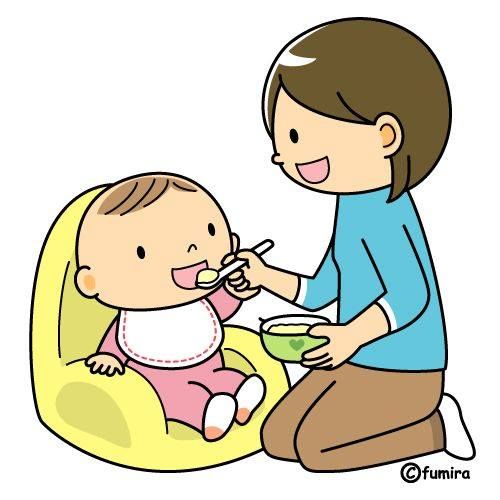 Latching on the breast incorrectly can cause sore or damaged nipples, so don't hesitate to ask your doctor to check that your baby is properly attached to the breast, even if you are told that everything is fine and you do not see obvious problems - especially while you are in the hospital. nine0003
Latching on the breast incorrectly can cause sore or damaged nipples, so don't hesitate to ask your doctor to check that your baby is properly attached to the breast, even if you are told that everything is fine and you do not see obvious problems - especially while you are in the hospital. nine0003
“While I was in the hospital, I called the doctor at every feed and asked me to check if I was breastfeeding correctly,” says Emma, mother of two from Australia. - There were several cases when it seemed to me that everything seemed to be right, but it was painful to feed, and the doctor helped me take the baby off the breast and attach it correctly. By the time I was discharged, I had already learned to do it confidently.”
When applying to the breast, point the nipple towards the palate. This will allow the baby to take the nipple and part of the areola under it into their mouth. It will be easier for him to suck if he has both the nipple and part of the areola around in his mouth. nine0009 6
nine0009 6
“When a baby latch on properly, it doesn't cause discomfort and it causes a pulling sensation, not pain,” Cathy explains. - The baby's mouth is wide open, the lower lip may be slightly turned outward, and the upper one lies comfortably on the chest. The body language of the child indicates that he is comfortable. There isn't much milk at this early stage, so you probably won't notice your baby swallowing, but he will suckle a lot and nurse frequently."
How often should a newborn be fed? nine0015
The frequency and duration of breastfeeding in the first week can vary greatly. “The first 24 hours of life are completely different for different children. Someone sleeps a lot (after all, childbirth is tiring!), And someone often eats, says Katie. - Such a variety greatly confuses young mothers. Everyone gives different advice, so it's important to remember that every mother and child is different."
“Colostrum is thicker than mature breast milk and is produced in smaller amounts, but has many benefits. When the baby eats colostrum, he learns to suck, swallow and breathe until milk begins to flow in more volume, ”explains Cathy. nine0003
When the baby eats colostrum, he learns to suck, swallow and breathe until milk begins to flow in more volume, ”explains Cathy. nine0003
Milk usually arrives on the second or fourth day after birth. Until this time, the baby is applied to the breast 8-12 times a day (and sometimes more often!), including at night. 7 Feeding may last 10-15 minutes at this stage, or 45 minutes or even an hour, as the baby is just beginning to develop the muscles and coordination needed to suckle effectively.
“At first, the intensity of feeding is very high, often higher than many people realize, and this is shocking to most new mothers,” says Cathy. - Sometimes mom has no time to go to the toilet, take a shower and have a snack. It usually comes as a surprise." nine0003
Camille, a mother from Australia, experienced this. “The first week, Frankie ate every two hours, day and night, and each time it took half an hour to an hour to feed,” she recalls. “My husband and I were completely exhausted!”
Do I need to feed my newborn on a schedule?
The good news is that frequent feeding promotes lactation and stimulates milk production.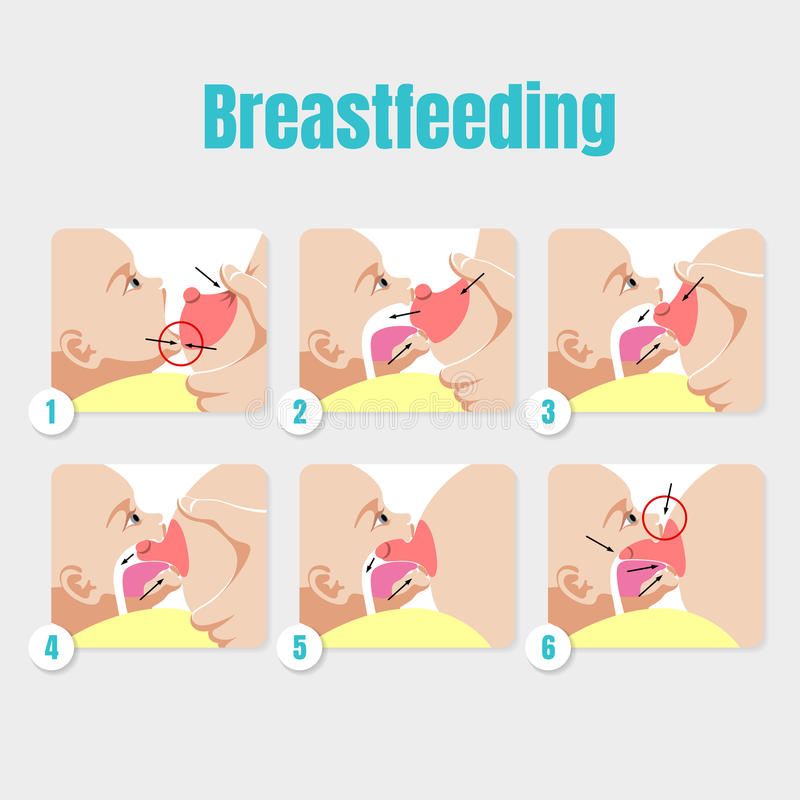 7 The more your baby eats, the more milk you will have. Therefore, forget about feeding your newborn on a schedule - this way he will have less chance of feeding. Try to feed your baby when he signals that he is hungry 8 :
7 The more your baby eats, the more milk you will have. Therefore, forget about feeding your newborn on a schedule - this way he will have less chance of feeding. Try to feed your baby when he signals that he is hungry 8 :
- tossing and turning in her sleep;
- opens eyes;
- turns his head if he feels a touch on his cheek;
- sticks out tongue;
- groans;
- licks lips;
- sucks fingers;
- is naughty;
- whimpers;
- is crying.
Crying is the last sign of hunger, so when in doubt, just offer your baby the breast. If he bursts into tears, it will be more difficult to feed him, especially at first, when both of you are just learning how to do it. As your baby grows, he will likely eat less frequently and take less time to feed, so breastfeeding will seem more predictable. nine0003
Does breastfeeding hurt?
You may have heard that breastfeeding is not painful at all, but in fact, in the first days, many new mothers experience discomfort. And this is not at all surprising, given that the nipples are not used to such frequent and strong sucking.
And this is not at all surprising, given that the nipples are not used to such frequent and strong sucking.
“Breastfeeding can be uncomfortable for the first couple of days – your body and your baby are just getting used to it. If a baby eats for too long and does not latch well, the sensations are almost the same as from unworn new shoes, Cathy compares. Just as tight shoes can rub your feet, improper suckling can damage your nipples. Prevention is always better than cure, so if the pain persists after a few days of feeding, contact a lactation consultant or healthcare professional.” nine0003
Maria, a mother from Canada, agrees: “Although my son seemed to latch onto the breast well, he damaged his nipples while feeding, and I was in pain. As it turned out, the reason was a shortened frenulum of the tongue. The breastfeeding specialists at our city clinic have been of great help in diagnosis and treatment.”
In addition, you may experience period cramps during the first few days after breastfeeding, especially if this is not your first baby. This is the so-called postpartum pain. The fact is that oxytocin, which is released during breastfeeding, contributes to further contraction of the uterus to restore its normal size. nine0009 4
This is the so-called postpartum pain. The fact is that oxytocin, which is released during breastfeeding, contributes to further contraction of the uterus to restore its normal size. nine0009 4
When milk arrives, the breasts usually become fuller, firmer and larger than before delivery. In some women, the breasts swell, harden and become very sensitive - swelling of the mammary glands occurs. 10 Frequent breastfeeding relieves these symptoms. For more breast care tips, read our article What is Breast Swelling?
How often does the newborn urinate and defecate?
What goes into the body must go back out. Colostrum
has a laxative effect, helping to eliminate meconium - the original feces. It looks a little scary - black and sticky, like tar. 11 But don't worry, it won't always be like this. Breastfed babies usually have a slightly sweet smell of stool.
How many times a day you will need to change diapers and how the contents should look like, see below.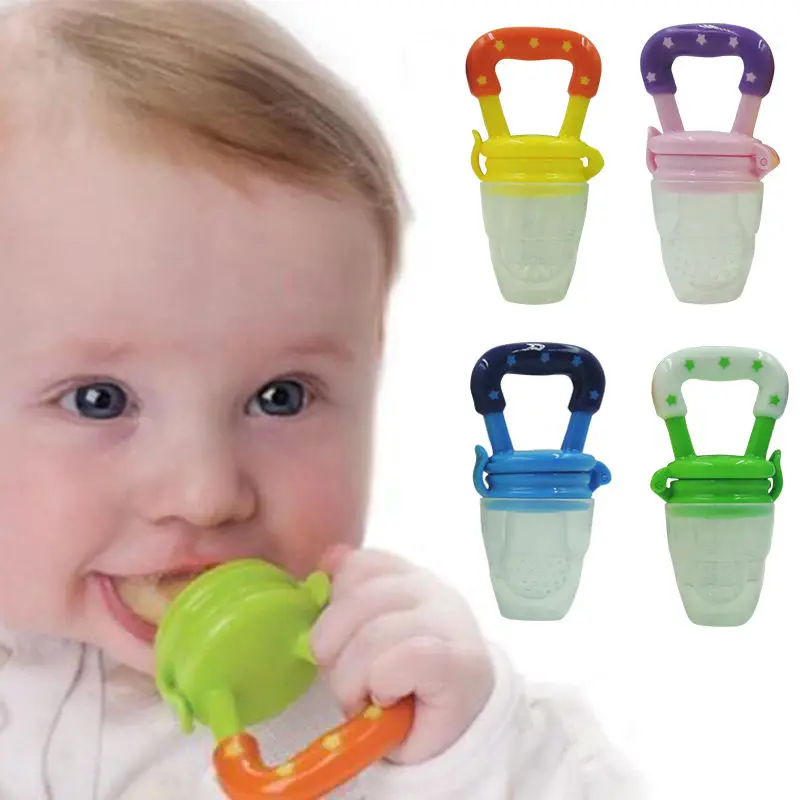
Day one
- Frequency: once or more.
- Colour: greenish black. nine0087
- Texture: sticky like tar.
Day two
- Frequency: twice or more.
- Colour: dark greenish brown.
- Texture: less sticky.
Day three
- Frequency: twice or more.
- Colour: greenish brown to brownish yellow.
- Texture: non-sticky.
Fourth day and then the entire first month
- Frequency: twice or more.
- Color: yellow (feces should turn yellow no later than by the end of the fourth day).
- Texture: grainy (like mustard with grains interspersed). Leaky and watery.
The baby's urine should be light yellow. On average, babies urinate once a day for the first two days. Starting around the third day, the number of wet diapers increases to three, and from the fifth day onwards, diapers have to be changed five times a day or more often.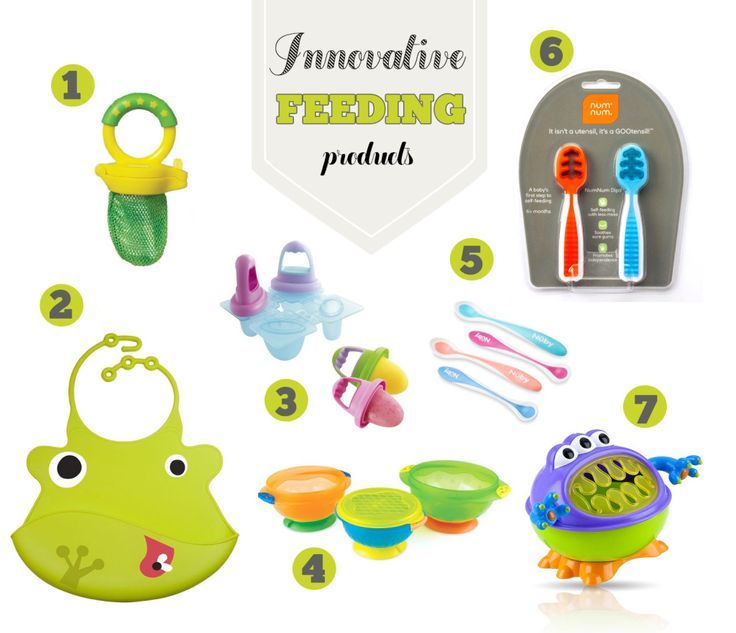 In addition, during the first few days, the weight of wet diapers increases. nine0009 11
In addition, during the first few days, the weight of wet diapers increases. nine0009 11
Is the baby getting enough breast milk?
Since very little milk is produced at first,
You may feel that this is not enough for your baby. But if you feed your baby on demand, you will produce exactly as much milk as he needs. If you want to keep the process under control, be guided by the frequency of diaper changes above. If your baby soils less diapers, check with your doctor.
“For the first three or four weeks, most babies just eat and sleep. If the child is worried and constantly asks for a breast, you should consult with your doctor, ”Katie recommends. nine0003
Sometimes the baby may vomit after feeding. If the vomit is the color of milk, this is not a cause for concern. But if there are orange, red, green, brown or black blotches in it, or the child vomits with a "fountain", consult a doctor. You should also consult a doctor if the baby has a high temperature, the fontanel (soft spot on the head) has sunk, blood is found in the stool, and also if the weight recorded at birth has not recovered within two weeks. 11
11
But if there are no frightening symptoms and the baby is growing at a normal pace, it means that he has enough milk. Soon you will both get used to breastfeeding and establish a more stable routine.
For the next step in breastfeeding, see Breastfeeding in the First Month: What to Expect.
Literature
1 Pang WW, Hartmann PE. Initiation of human lactation: secretory differentiation and secretory activation. J Mammary Gland Biol Neoplasia 2007;12(4):211-221. - Pang, W.W., Hartmann, P.I., "Lactation initiation in the lactating mother: secretory differentiation and secretory activation." G Mammary Gland Biol Neoplasia. 2007;12(4):211-221.
2 Shashi R et al. Postpartum psychiatric disorders: Early diagnosis and management. Indian J Psychiatry . 2015; 57( Suppl 2): S 216– S 221. - Shashi R. et al., Postnatal mental disorders: early diagnosis and treatment. Indian J Saikiatri. 2015; 57(App 2):S216-S221.
2015; 57( Suppl 2): S 216– S 221. - Shashi R. et al., Postnatal mental disorders: early diagnosis and treatment. Indian J Saikiatri. 2015; 57(App 2):S216-S221.
3 Moberg KU, Prime DK. Oxytocin effects in mothers and infants during breastfeeding. Infant . 2013;9(6):201-206. - Moberg K, Prime DK, "The effects of oxytocin on mother and child during breastfeeding." nine0201 Infant. 2013;9(6):201-206.
4 Sobhy SI, Mohame NA. The effect of early initiation of breast feeding on the amount of vaginal blood loss during the fourth stage of labor. J Egypt Public Health Assoc . 2004;79(1-2):1-12. - Sobhi SI, Moham NA, "Early initiation of breastfeeding and its effect on vaginal bleeding in the fourth stage of labor." nine0201 G Egypt Public Health Assoc. 2004;79(1-2):1-2.
2004;79(1-2):1-2.
5 Meier PP et al. Which breast pump for which mother: an evidence-based approach to individualizing breast pump technology. J Perinatol . 2016;36(7):493. - Meyer P.P. et al., Breastpump Selection: A Scientific Approach to Customizing Pumping Technology. J Perinatol (Journal of Perinatology). 2016;36(7):493-499.
6 Cadwell K. Latching - On and Suckling of the Healthy Term Neonate: Breastfeeding Assessment. J Midwifery & Women ’ s 2007;52(6):638-642. — Cadwell, K., "Latching and sucking in healthy newborns: evaluation of breastfeeding." W Midwifery Women Health. 2007;52(6):638-642.
7 Kent JC et al. Principles for maintaining or increasing breast milk production. 2012;41(1):114-121. - Kent J.S. et al. , "Principles for Maintaining and Increasing Milk Production". J Obstet Ginecol Neoneutal Nurs. 2012;41(1):114-121.
, "Principles for Maintaining and Increasing Milk Production". J Obstet Ginecol Neoneutal Nurs. 2012;41(1):114-121.
8 Australian Breastfeeding Association [ Internet ]. Feeding cues ; 2017 Sep [ cited 2018 Feb ]. - Australian Breastfeeding Association [Internet], Feed Ready Signals; September 2017 [cited February 2018]
9 Jacobs A et al. S3-guidelines for the treatment of inflammatory breast disease during the lactation period. Geburtshilfe Frauenheilkd . 2013;73(12):1202-1208. - Jacobs A. et al., "Guidelines S -3 for the management of inflammatory breast disease during breastfeeding." Geburtskhilfe und Frauenheilkünde. 2013;73(12):1202-1208.
10 Lawrence RA, Lawrence RM. Breastfeeding: A guide for the medical profession. 7th ed. Maryland Heights MO, USA: Elsevier Mosby; 2010. 1128 p . - Lawrence R.A., Lawrence R.M., "Breastfeeding: A guide for healthcare professionals." Seventh edition. Publisher Maryland Heights , Missouri, USA: Elsevier Mosby; 2010. P. 1128.
Breastfeeding: A guide for the medical profession. 7th ed. Maryland Heights MO, USA: Elsevier Mosby; 2010. 1128 p . - Lawrence R.A., Lawrence R.M., "Breastfeeding: A guide for healthcare professionals." Seventh edition. Publisher Maryland Heights , Missouri, USA: Elsevier Mosby; 2010. P. 1128.
newborn's diet on IV, how to properly feed a baby with formula from a bottle
The desire for a child to grow up strong and healthy is natural for mothers. And the health of a newborn begins with proper nutrition. Mother's milk has always been considered the best option for feeding - the most healthy and nutritious food for infants. However, in some cases, breastfeeding is not possible. And then mixtures come to the aid of mothers. nine0003
Content: Hide
- In what cases is the transition to artificial feeding
- How to choose a mixture of
- Basic feeding rules
- The main errors
- under artificial feeding
.
 feeding
feeding Medical contraindications to breastfeeding. There are a number of diseases in which breast milk is prohibited. On the mother's side, these are HIV, an open form of tuberculosis, dangerous infections, and a serious state of health. On the part of the child, these are leucinosis, galactosemia, and individual food intolerance. It is not necessary to take tests after hearing the terrible names of diseases. All newborns are checked in maternity hospitals for their presence. But allergies are not so easy to identify. Many newborns have skin rashes and redness, which may be due to a reaction to an aggressive environment. Only a strict diet for the mother can help here, so that her milk does not contain allergens, monitoring the baby and consulting a doctor. nine0003
Lack of lactation or its complete cessation. This is the second objective reason for transferring a child from breast milk to formula. Lactation does not always come in the right amount and it can be increased. It happens that milk disappears a few days after the birth of the crumbs. This often depends on the individual characteristics of the mother's body. So that the child does not starve, he is first transferred to mixed, and then completely to artificial feeding.
It happens that milk disappears a few days after the birth of the crumbs. This often depends on the individual characteristics of the mother's body. So that the child does not starve, he is first transferred to mixed, and then completely to artificial feeding.
Insufficient nutritional value of mother's milk. Usually this problem can be solved without resorting to the transition to IoT, but this is not always possible. A woman may have a lot of milk, but it will be like water in both color and consistency. In such cases, doctors give advice to the mother on nutrition in order to increase the fat content of milk and its usefulness. If the milk remains watery, the child stops eating, cries of hunger, loses weight. The only way out in this situation is the transition to the mixture. nine0003
Impossibility of regular feeding. Children who, for a number of reasons, are separated from their mother for long periods of time are transferred to artificial feeding: the woman is in a hospital, going to work or study, business trips, etc. If the break in breastfeeding is one-time, then restoring lactation and breastfeeding is still possible . However, more often in such cases, breastfeeding has to be abandoned.
If the break in breastfeeding is one-time, then restoring lactation and breastfeeding is still possible . However, more often in such cases, breastfeeding has to be abandoned.
Mother's personal wish. Unfortunately, there are cases when a woman, having every opportunity to breastfeed her baby, refuses to breastfeed for various subjective reasons. In this case, lactation is interrupted, and the baby is transferred to the mixture. nine0003
See also: Newborn weight gain by month
How to choose a formula
If you are going to transfer your baby to artificial feeding, then the first thing you will encounter will be the choice of nutrition. Today there are a large number of different mixtures: adapted and non-adapted, dairy and sour-milk, dry and liquid. There are mixtures against regurgitation, hypoallergenic, for premature babies, etc. How to choose the optimal replacement for mother's milk from such a variety? nine0003
- Make your choice only after consulting a pediatrician.
 The doctor will examine the baby and give all the necessary recommendations.
The doctor will examine the baby and give all the necessary recommendations. - Monitor your child. When adapting to a new diet, the child may have small rashes, but they disappear if the body begins to absorb the mixture normally. The baby eats with appetite, he has a normal stool and no colic. Otherwise, the mixture must be changed.
- If there is a need to replace the mixture with a thicker formula (anti regurgitation), choose the same brand of food that was previously used. nine0087
- Consider the age of the baby. All mixtures have a gradation by months of life.
- Prefer adapted formulas, they are usually easier to digest
Basic Rules for Artificial Feeding save you a lot of problems.
1. Choose proven blends. This applies not only to the choice of brand, but also to the packaging itself. Look at its integrity, check the expiration date. nine0003
2. Observe the storage conditions for opened packaging at home (in a dry and cool place, but in no case in the refrigerator, the mixture must not become damp). Remember that the open mixture is stored for three weeks. After this period, it can no longer be used.
Remember that the open mixture is stored for three weeks. After this period, it can no longer be used.
3. Strictly follow the instructions when preparing meals. It is indicated on the packaging. Water for the preparation of the mixture must be purified and boiled. The optimal temperature for preparing the mixture is 36–37 °C. You can cook food right in the bottle. This is quite convenient, since baby bottles have a volume scale that makes it easier to calculate the right amount of scoops. The mixture must be stirred until completely dissolved, and then cooled to an acceptable temperature so that the baby can drink without burning himself. You can check if the milk is hot by dropping it on your wrist - there the skin is most tender and sensitive. If the temperature is almost not felt, then the mixture can be given to the child. nine0003
4. Sterilize baby dishes. Baby bottles and nipples should be thoroughly rinsed using a special brush so that no food residue remains. You can use children's dishwashing detergents.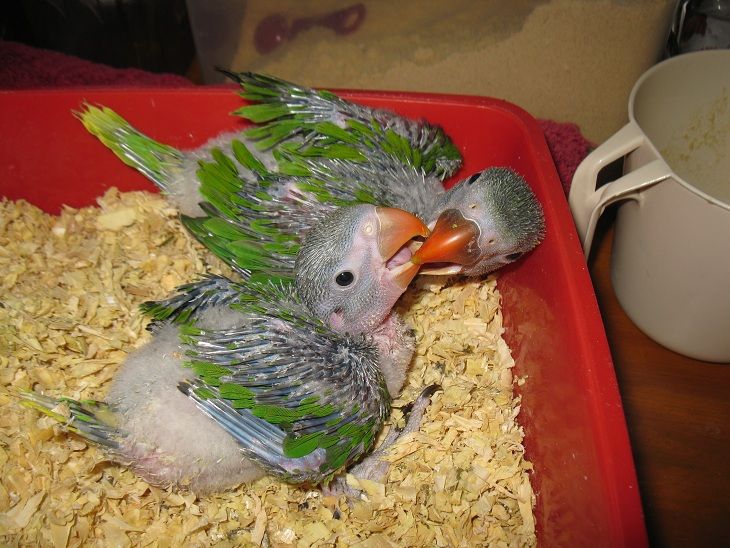 Do not wash bottles with common cleaning products that you are used to using, no matter how good they are. After washing, be sure to place the dishes in boiling water. This helps to kill harmful bacteria. It is recommended to sterilize children's dishes during the entire first year of a baby's life. Then you can limit yourself to just a thorough wash. nine0003
Do not wash bottles with common cleaning products that you are used to using, no matter how good they are. After washing, be sure to place the dishes in boiling water. This helps to kill harmful bacteria. It is recommended to sterilize children's dishes during the entire first year of a baby's life. Then you can limit yourself to just a thorough wash. nine0003
5. Hold the bottle in a semi-vertical position when feeding. The milk should completely fill the nipple. This prevents the child from swallowing air. After feeding, it is necessary to hold the baby in a column for several minutes to avoid spitting up.
6. Monitor the amount of formula consumed and the feeding schedule. Maintaining a balance is extremely important for the healthy and full development of the baby. nine0003
- Calculate the amount of formula to be prepared based on the baby's weight. It is body weight, and not the age of the crumbs, that is the main indicator when calculating the daily nutritional intake.
 You can find out the required volume of the mixture for feeding either at a pediatrician’s appointment, or on your own (it is recommended to use Maslov’s caloric method when calculating).
You can find out the required volume of the mixture for feeding either at a pediatrician’s appointment, or on your own (it is recommended to use Maslov’s caloric method when calculating). - Observe the breaks between feedings. During the day they should be 3.5 hours, at night - 6. Try not to break the schedule.
- Give your child water. Supplementation with water is a necessity for artificial feeding. Water should be given somewhere in the middle of the interval between feedings or 10-15 minutes after it. Avoid supplementation before meals. nine0087
Major mistakes in artificial feeding
Overfeeding. The desire to feed the child is understandable, but in the case of mixtures, feeding must be approached strictly. On artificial feeding, the child is normally gaining weight very well. Excess body weight is an additional burden on the body and health problems. Even an adult can find it difficult to cope with problems from being overweight. What to say about the tiny weak body of a newborn? Follow the diet and control the daily milk intake.





